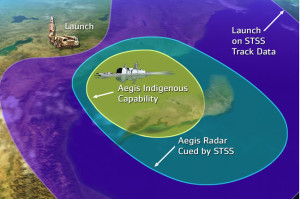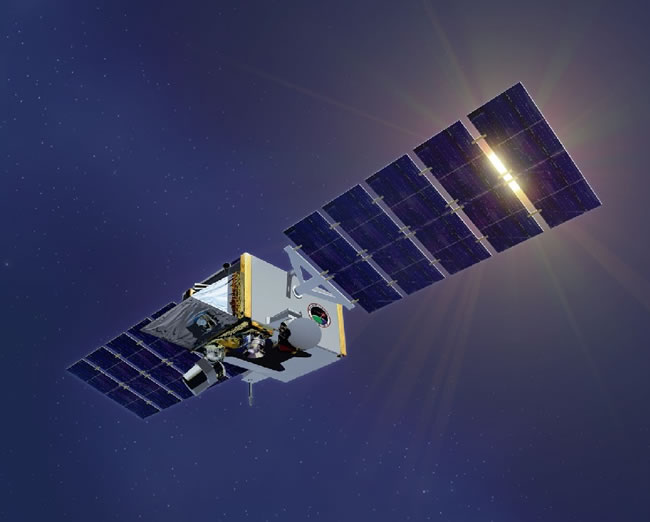
Second-generation Aegis Ballistic Missile Defense (BMD) system achieved its first intercept using tracking information from the Space Tracking and Surveillance System Demonstration (STSS-D) satellites during a Missile Defense Agency (MDA) test. The use of this new space-based assets to provide mid-course fire control quality data to an Aegis BMD ship provides the ability for longer range intercepts and defense of larger areas. Initial indications are that all components performed as designed. MDA program officials will assess and evaluate the system performance based upon telemetry and other data obtained during the test.
“STSS-D’s unique vantage point in space allows the sensor payload to see the threat early in its trajectory and provide launch quality data sooner than nearly any other option,” said Bill Hart, vice president of Space Systems for Raytheon’s Space and Airborne Systems business. “We can give our naval warfighters extra time to analyze and respond, by providing target data before the ship can track the threat. That’s a tremendous advantage.”
“Aegis has achieved many firsts, but using accurate tracking information from a satellite to flexibly enable expanded battlespace and the capabilities of the sea-based Aegis BMD system may prove to be one of the program’s most significant milestones,” said Nick Bucci, director of BMD development programs for Lockheed Martin’s Mission Systems and Training business. “For a long time, many have believed the best path forward for missile defense is an architecture that combines flexible sea-based defenses with persistent space-based capabilities. This test proves that technology and that architecture can be a reality.”
During today’s ‘Test Standard Missile-20’ (FTM-20) (February 13, 2013) at 11:10 PM Hawaii Standard Time (HST) the USS Lake Erie (CG 70) AEGIS missile cruiser intercepted a medium-range ballistic missile target over the Pacific Ocean by a Standard Missile-3 (SM-3) Block IA guided missile.
The target missile was launched from the Pacific Missile Range Facility, on Kauai, Hawaii. The target flew northeast towards a broad ocean area of the Pacific Ocean, where the STSS-D satellites detected it. The track data was transmitted to USS Lake Erie before the on-board SPY-1 radar could detect the target. The satellites continued to provided targeting data for the 2nd Generation AEGIS BMD battle management system, that employed “Launch on Remote” doctrine to engage the threat. The test proved this “launch on remote” concept successful. This doctrine was first employed during testing in April 2011.
Through this intercept method the ship developed a fire control solution from the STSS-D track and launched the SM-3 Block IA guided missile approximately five minutes after target launch. The STSS-D data was used until the target was detected and tracked by the SPY-1 radar, which continued to transmit guidance commands to the SM-3 guided missile until it intercepted the target. On the final phase of the trajectory the SM-3 maneuvered to a point in space where it released its kinetic warhead. The kinetic warhead acquired the target reentry vehicle, diverted into its path, and, using only the force of a direct impact, engaged and destroyed the target.
FTM-20 is the 24th successful intercept in 30 flight test attempts for the Aegis BMD program since flight testing began in 2002. Across all Ballistic Missile Defense System programs, this is the 58th successful hit-to-kill intercept in 73 flight tests since 2001.

















